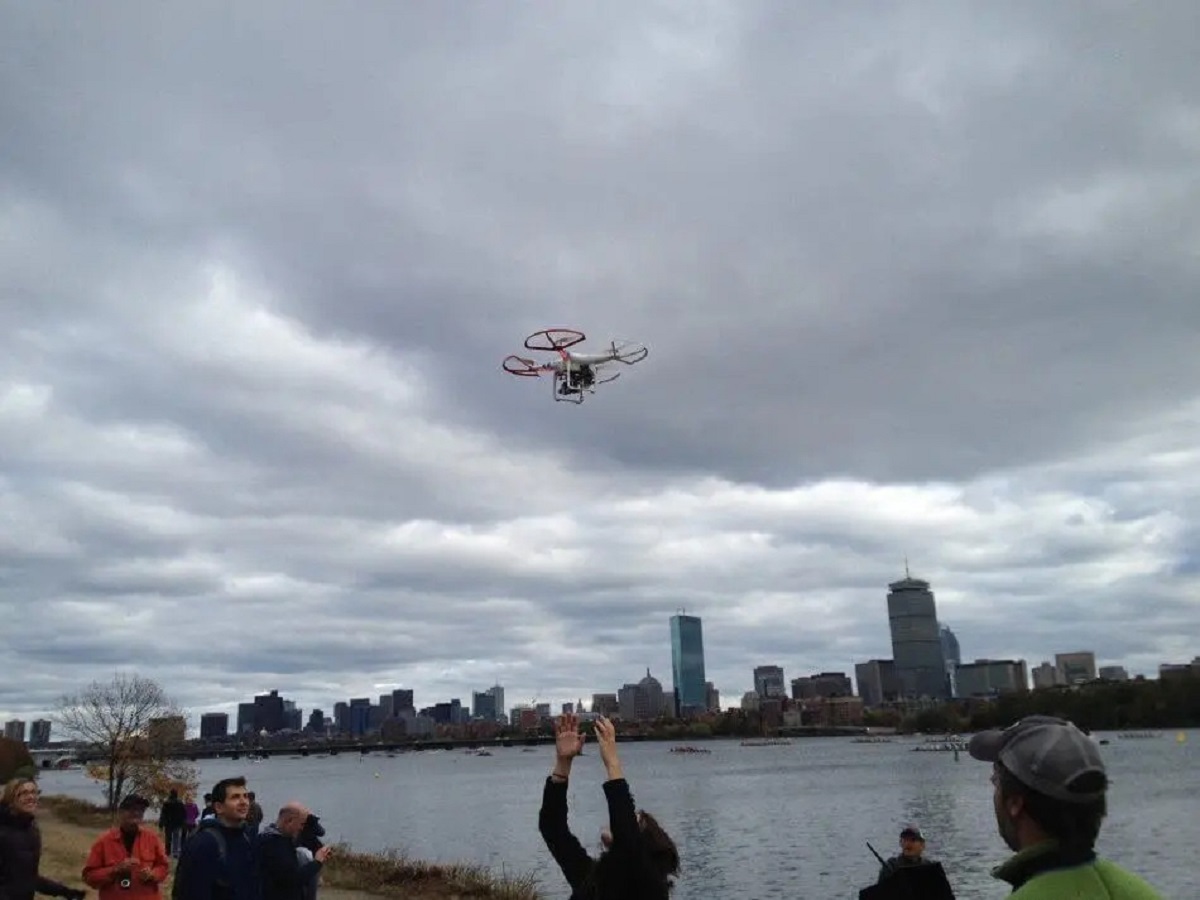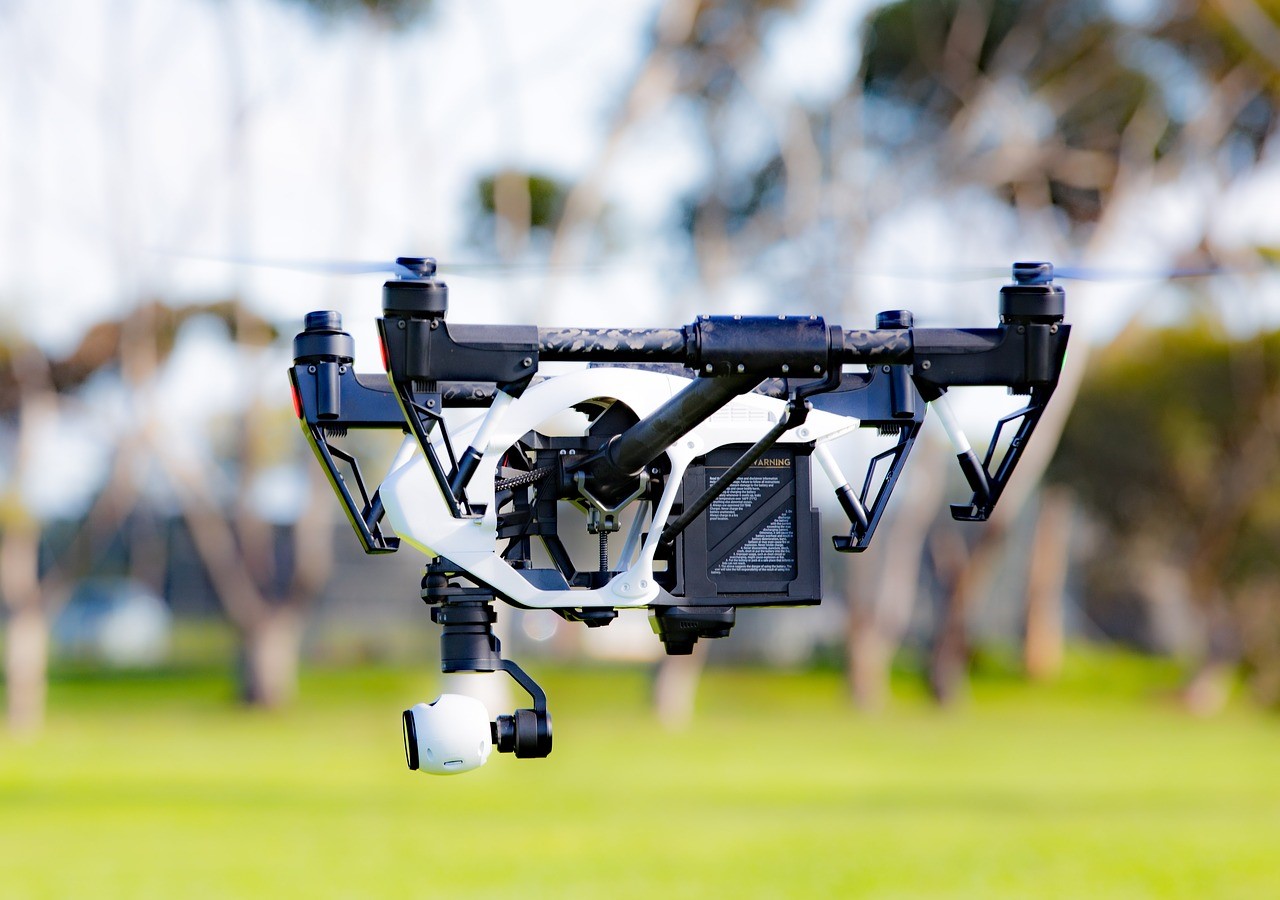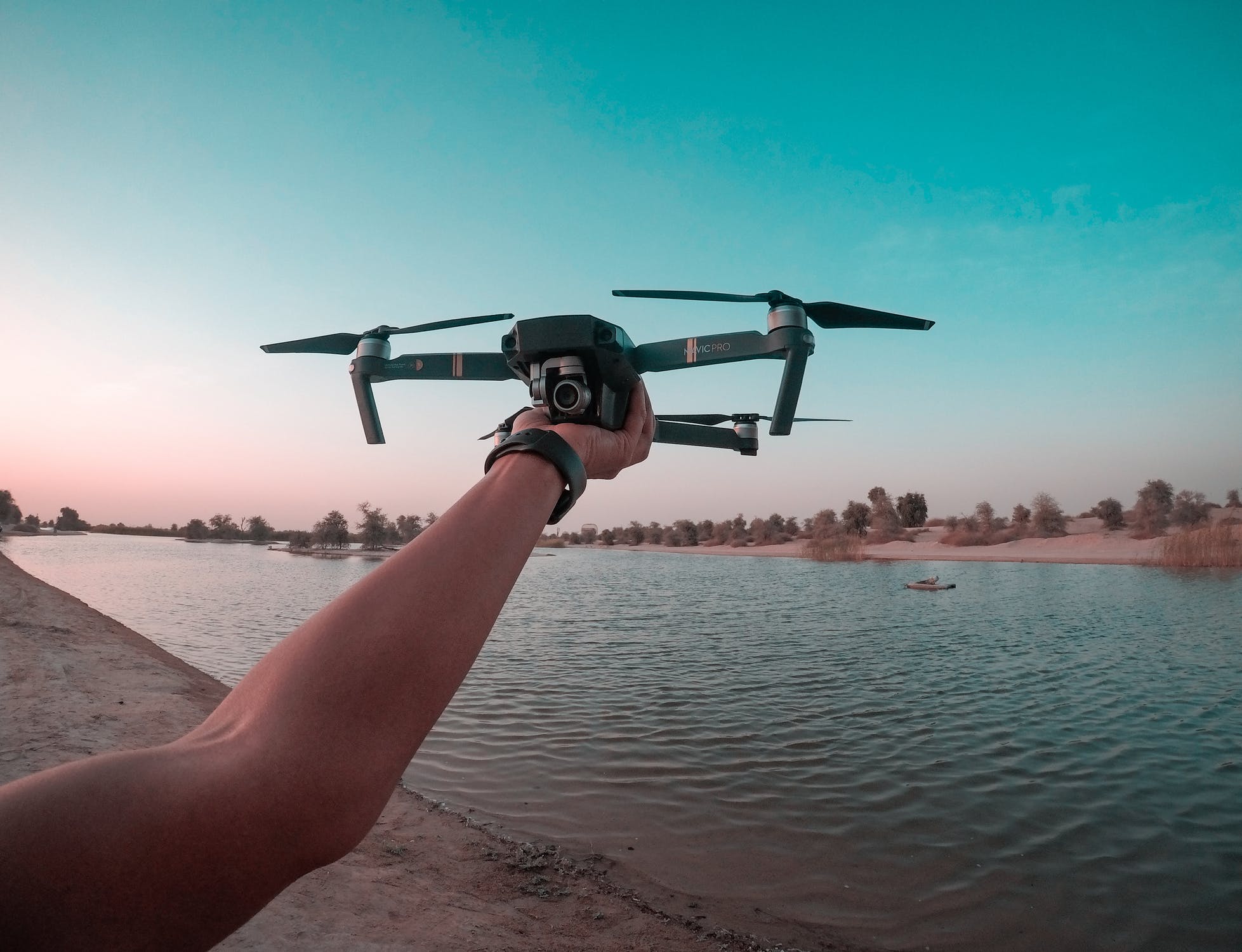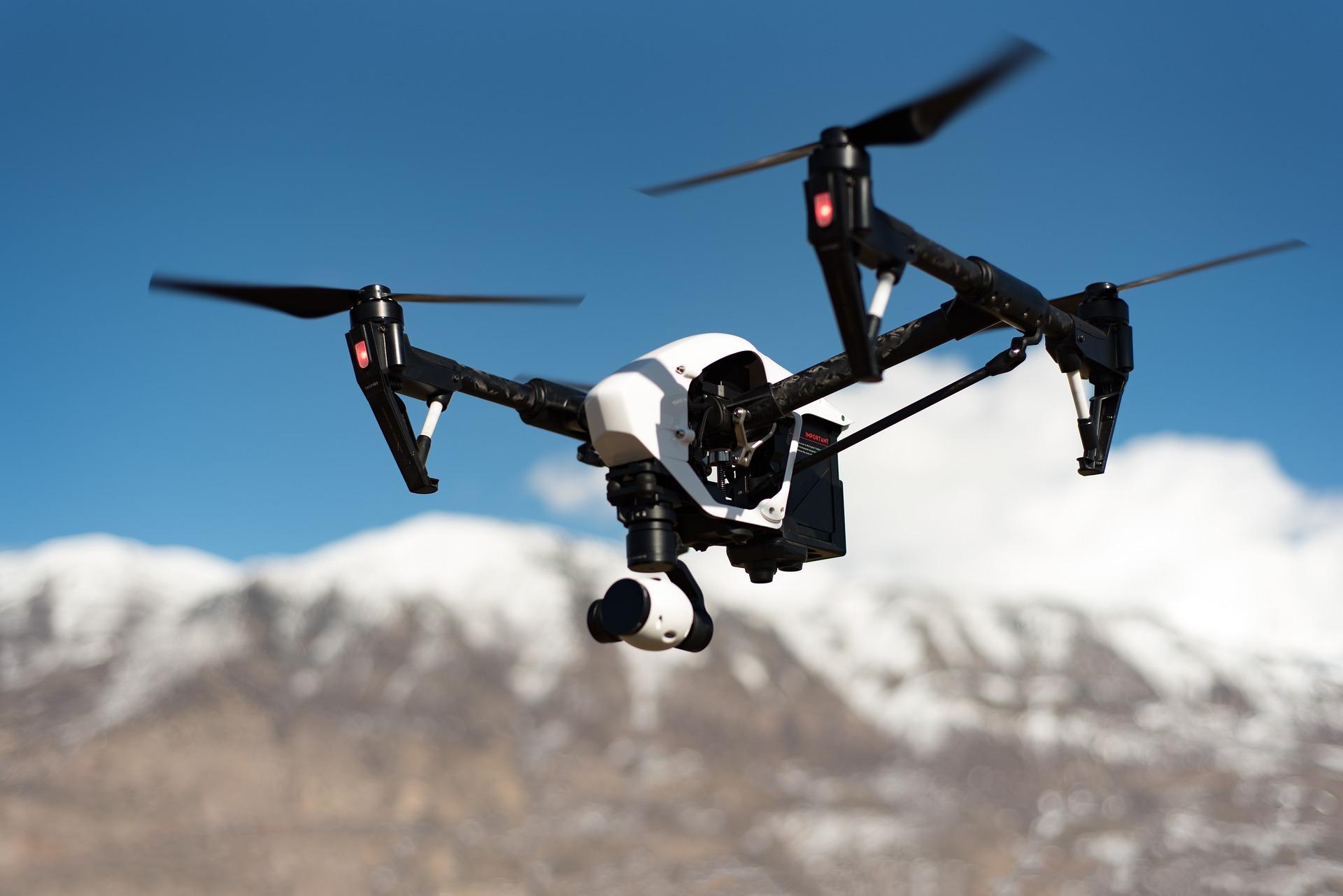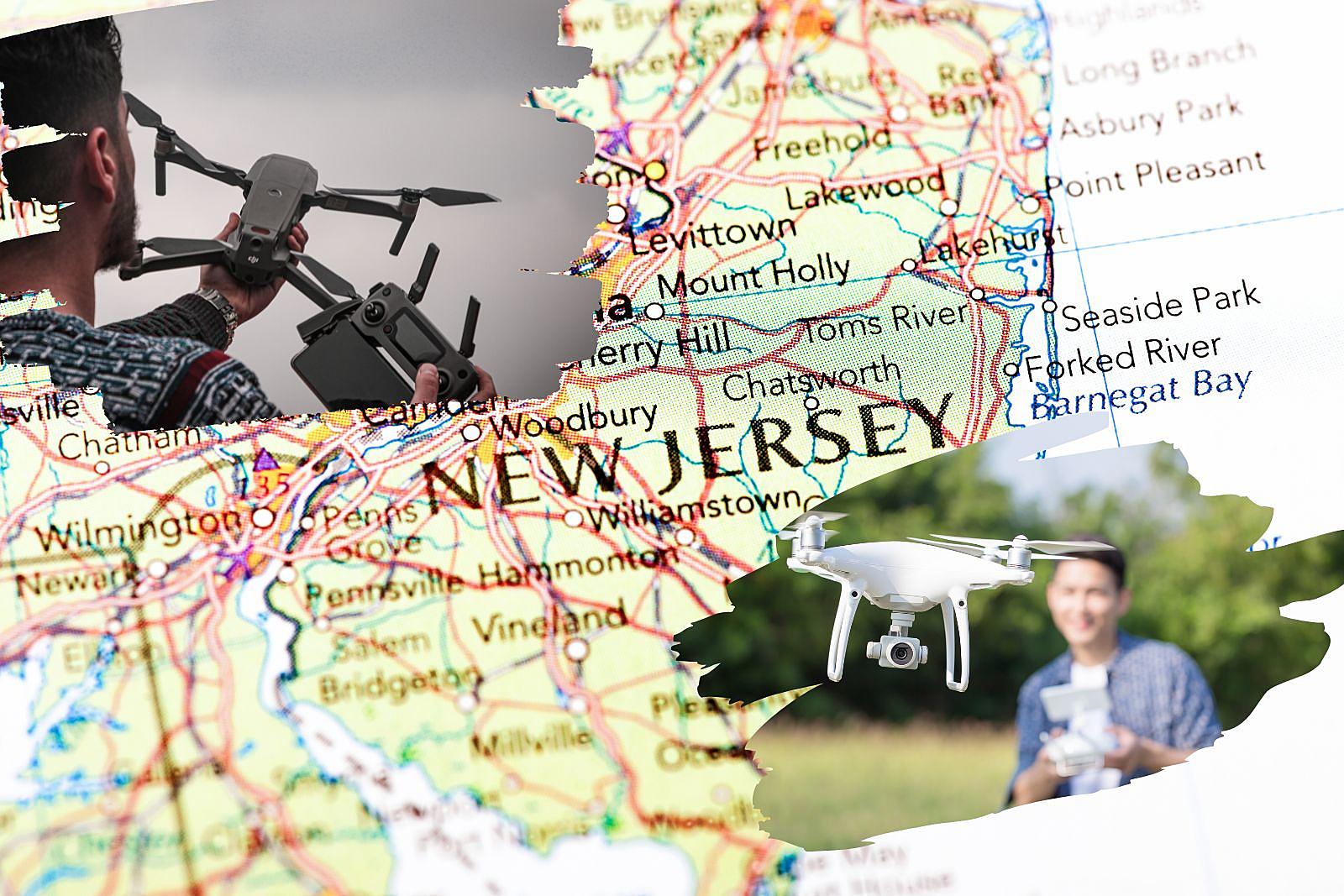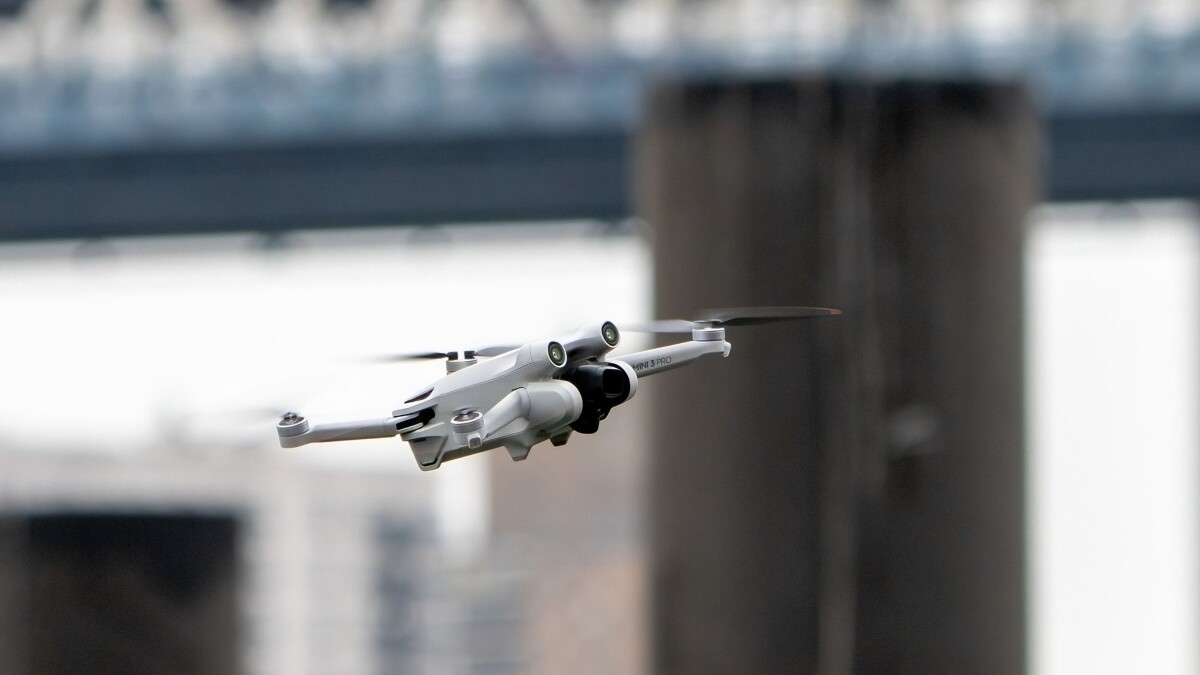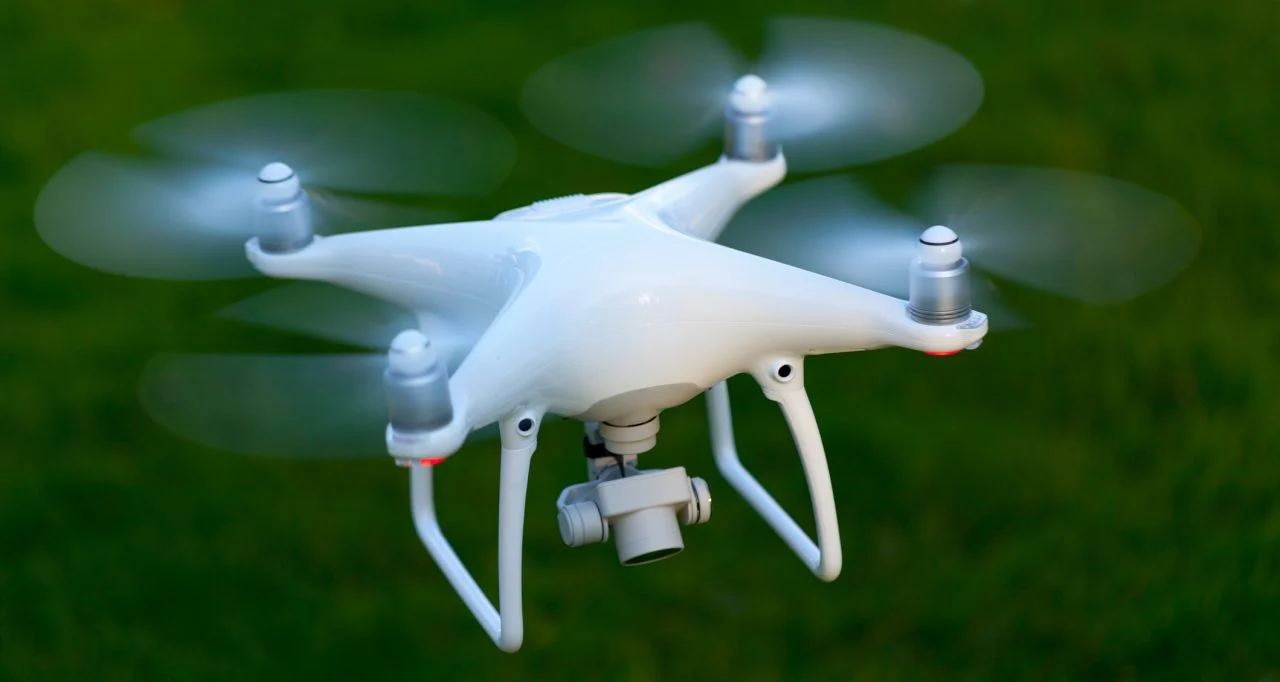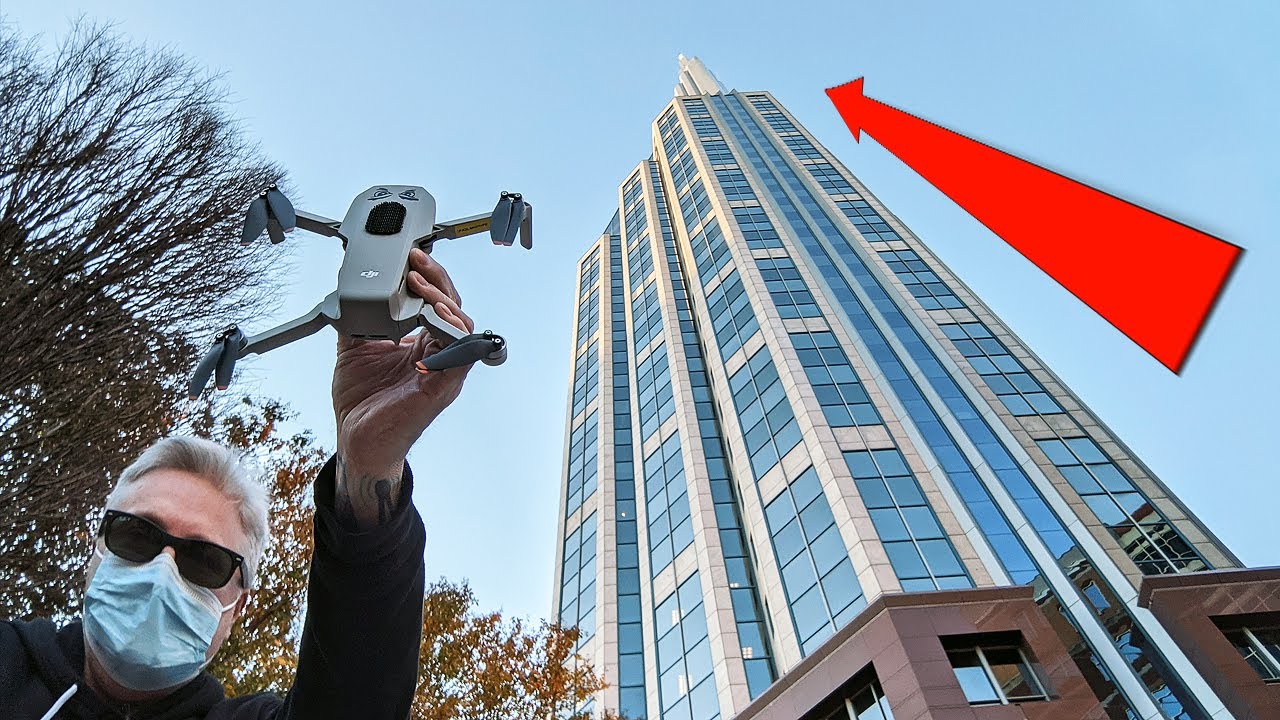Introduction
As the popularity of personal drones continues to soar, it’s important for drone enthusiasts to understand the rules and regulations that govern their operation. One crucial rule that every drone pilot must be aware of is the 400-foot rule. This rule, enforced by the Federal Aviation Administration (FAA), limits the maximum altitude at which drones can be flown.
While it may be tempting for drone owners to explore the skies at higher altitudes, exceeding the 400-foot limit can have serious consequences. In this article, we will explore the reasons behind the 400-foot rule, the safety risks associated with flying above this limit, and the legal implications drone pilots may face if they violate the rule.
Understanding these factors is crucial not only for ensuring the safety of people and property, but also for preserving the reputation of the drone community as responsible and law-abiding. By adhering to the 400-foot rule, drone pilots can enjoy their hobby while minimizing potential risks and maintaining a positive image in the eyes of the public and aviation authorities.
In the following sections, we will delve into the importance of the 400-foot rule and the various aspects of compliance and safety that drone operators need to be aware of. By following best practices and understanding the potential consequences of disregarding this rule, drone enthusiasts can ensure a safe and enjoyable flying experience for themselves and others.
Understanding the 400-foot Rule
The 400-foot rule, established by the FAA, sets a maximum altitude for drones of 400 feet above ground level (AGL). This rule applies to both recreational and commercial drone operations in the United States. While it may seem arbitrary, the 400-foot limit is in place to ensure the safety of both manned aircraft and people on the ground.
Operating a drone above 400 feet can potentially put it in the airspace where manned aircraft, such as helicopters and small planes, operate. By imposing this limit, the FAA aims to reduce the risk of collisions between drones and manned aircraft, which could have catastrophic consequences.
Drones flying at higher altitudes become harder to spot for pilots, increasing the chances of a near-miss or even a collision. Additionally, the higher a drone flies, the more it is susceptible to strong winds and adverse weather conditions that could compromise its stability and control.
It’s important to note that the 400-foot limit is relative to the ground, not to the launch point of the drone. For example, if you fly your drone from the bottom of a hill or a building, the 400-foot limit still applies, and you should measure the altitude from the ground level at the location where your drone is hovering.
While the 400-foot rule is a general guideline, there are exceptions for certain situations and areas. For example, if you are flying your drone in an area with a controlled airspace, you may be subject to additional altitude restrictions. It is essential to check for any specific regulations or Temporary Flight Restrictions (TFRs) that may apply to the area where you plan to fly your drone.
Understanding and abiding by the 400-foot rule is vital for ensuring the safety of airspace and preserving the harmony between drones and manned aircraft. By keeping drones within this limit, drone pilots can actively participate in the aviation ecosystem while minimizing the risk of accidents and conflicts.
Safety Risks of Flying Above 400 Feet
Exceeding the 400-foot limit for drone operations can pose significant safety risks for both the drone itself and those on the ground. While it may be tempting to explore higher altitudes for better views or more extensive coverage, it’s crucial to understand the potential dangers associated with flying above this limit.
One of the primary safety risks of flying above 400 feet is the increased likelihood of encountering manned aircraft. When drones venture into higher altitudes, they enter the airspace where helicopters, small planes, and other aircraft operate. This increases the chances of a collision, which could be catastrophic for both the drone and the manned aircraft. Even a small drone colliding with a helicopter or an airplane can disrupt the balance of the aircraft and compromise the safety of those on board.
Another safety concern when flying above 400 feet is the reduced visibility for both the drone pilot and other airspace users. At higher altitudes, drones can be more challenging to spot, especially for pilots flying at low altitudes. This heightens the risk of near-misses or collisions, as the drone may not be detected until it is too late to take evasive action.
Furthermore, flying above 400 feet exposes drones to stronger winds and adverse weather conditions. As drones ascend, wind speeds may differ significantly from ground-level conditions, making it difficult to control the drone effectively. The higher altitude can also make it more challenging to maintain a stable flight and navigate safely, leading to potential accidents or crashes.
When drones fly above the 400-foot limit, they may also encroach on the airspace used by emergency helicopters and other essential aircraft operations. This can hinder the ability of emergency responders to carry out their critical missions, putting lives at risk in emergency situations.
It is important to recognize that the 400-foot rule is not arbitrary; it is in place to ensure the safety of both drones and other airspace users. By adhering to this limit, drone pilots can mitigate the potential risks associated with operating at high altitudes and help maintain the safety and integrity of the aviation environment.
Legal Consequences of Violating the 400-foot Rule
Violating the 400-foot rule established by the FAA can have serious legal consequences for drone pilots. The FAA takes drone safety and regulation enforcement seriously, and they have the authority to impose fines and penalties on individuals who disregard the rules.
One of the potential legal consequences of flying above 400 feet is the issuance of a warning or a notice of violation from the FAA. This serves as a formal notification that the drone pilot has violated the regulations and may require them to take corrective actions or pay a monetary penalty.
Repeated or deliberate violations of the 400-foot rule can lead to more severe penalties, including higher fines and possible revocation of the drone pilot’s Remote Pilot Certificate. This can prevent the individual from legally flying a drone in the future or engaging in commercial drone operations.
Moreover, flying a drone above 400 feet can be seen as reckless behavior and may result in being charged with a misdemeanor, especially if the violation puts others at risk or leads to property damage. The laws and penalties may vary depending on the jurisdiction, but it’s essential to understand that operating a drone in violation of regulations can have legal ramifications.
It’s worth noting that violating the 400-foot rule can also have implications when it comes to drone insurance coverage. Insurance policies often have provisions that require drone pilots to comply with applicable laws and regulations. If a drone pilot is found to have willfully violated the 400-foot rule, it could potentially invalidate their insurance coverage, leaving them personally liable for any damages or legal expenses that may occur. It is crucial for drone pilots to be aware of their insurance coverage terms and conditions and ensure compliance to receive the necessary protection.
For the sake of safety and legal compliance, it is important for drone pilots to understand and respect the 400-foot rule set by the FAA. By doing so, they can avoid the potential legal consequences and contribute to maintaining a safe and responsible drone community.
Interference with Aviation and Airspace
Flying a drone above the 400-foot limit can cause interference with aviation operations and compromise the safety of manned aircraft. The airspace is regulated to ensure the orderly and safe flow of air traffic, and drones that exceed their designated altitudes can disrupt this delicate balance.
One of the main concerns is the potential for a drone to collide with a manned aircraft. While manned aircraft have collision avoidance systems and are operated by trained pilots, drones pose a unique challenge due to their small size and limited visibility. Flying above the 400-foot limit increases the risk of a collision, especially in areas where aircraft often operate at lower altitudes, such as near airports or heliports.
Encountering a drone unexpectedly can distract a pilot and force them to divert their attention from their primary tasks, potentially compromising the safety of flight operations. The presence of drones in unauthorized airspace can also disrupt activities such as aerial surveys, photography, or search and rescue missions that require an open and clear airspace.
Interference with aviation operations extends beyond the risk of collisions. Drones that fly above their designated altitude can also cause confusion or false alarms for air traffic control. If an unauthorized drone appears on the radar or enters controlled airspace, it can disrupt the normal flow of air traffic and require additional resources to assess the situation and ensure safety.
Moreover, unauthorized drones flying at higher altitudes can interfere with critical communication systems used by aircraft, such as radio frequencies or GPS signals. These systems are essential for pilots to navigate and communicate with air traffic control and other aircraft, and interference from unauthorized drones can compromise their effectiveness, potentially leading to errors or miscommunications.
The FAA and aviation authorities take the issue of drone interference with aviation and airspace seriously. Violating the 400-foot rule not only puts the safety of manned aircraft at risk but can also result in legal consequences for the drone operator. It is crucial for drone pilots to operate within their authorized altitudes, avoid restricted areas, and respect the rules and regulations in place to maintain the safety and integrity of the airspace system.
Risks of Collisions and Accidents
Exceeding the 400-foot limit for drone operations significantly increases the risks of collisions and accidents. These risks extend not only to the drone itself but also to people and property on the ground.
One of the primary concerns is the potential for drones to collide with other aircraft, including manned aircraft. At higher altitudes, drones become more challenging to spot for pilots, increasing the chances of a near-miss or a direct collision. Even a small drone can cause significant damage to an aircraft, compromising its control and endangering the lives of those on board.
Collisions with other drones are also a risk, especially in areas where multiple drones are operating simultaneously. As more drone enthusiasts take to the skies, the probability of mid-air collisions increases. In the event of a collision between two or more drones, there is a high likelihood of damage to the drones themselves, as well as potential harm to nearby people or objects.
Operating drones at higher altitudes also introduces the risk of losing control. Strong winds, sudden gusts, or unforeseen weather changes can affect the stability and maneuverability of the drone, potentially leading to loss of control and subsequent accidents. A drone that loses control can crash into buildings, vehicles, or even people, causing injury or damage.
Another risk of flying above 400 feet is the increased complexity and difficulty of operating the drone safely. The higher the altitude, the more challenging it is to maintain situational awareness and control the drone accurately. Pilots may struggle with maintaining a stable flight path, avoiding obstacles, or responding to emergencies, increasing the chances of accidents and incidents.
It is crucial for drone pilots to recognize and mitigate the risks of collisions and accidents associated with flying above the 400-foot limit. By adhering to this altitude restriction, staying informed about weather conditions, and practicing safe flight techniques, drone pilots can reduce the likelihood of incidents and contribute to the overall safety of the airspace.
Impact on Drone Insurance Coverage
Exceeding the 400-foot rule for drone operations can have significant implications for your insurance coverage. Most drone insurance policies require policyholders to comply with all applicable laws and regulations. If you violate the 400-foot limit, it may result in a breach of your insurance policy terms.
Typically, drone insurance policies provide coverage for various aspects, including liability for bodily injury, property damage, and theft or damage to the drone itself. However, this coverage is contingent upon compliance with all regulations and operating within authorized limits, including altitude limitations.
If you fly your drone above the 400-foot limit and an incident occurs, such as a collision with another object or damage to third-party property, violating the regulations may affect your insurance claim. The insurance company could potentially deny coverage or reduce the payout, leaving you personally liable for the damages or losses.
In addition, operating a drone above the authorized altitude may be seen as negligence or reckless behavior, which could impact your insurance coverage even if the incident does not result in any damage or claims. Insurers may consider your actions as a breach of the duty of care and may refuse to renew your policy or impose higher premiums in the future.
It is essential for drone operators to read and understand their insurance policy terms and conditions thoroughly. Familiarize yourself with the requirements and exclusions related to regulatory compliance, including adherence to altitude limits. By ensuring compliance with the 400-foot rule, drone pilots can maintain the integrity of their insurance coverage and have peace of mind in case of accidents or incidents.
In summary, violating the 400-foot rule can have a significant impact on your drone insurance coverage. By adhering to the regulated altitude limits, drone pilots can protect themselves from potential financial hardships and ensure that they are fully covered for any liability or damages that may occur during drone operations.
Potential Fines and Penalties for Violating Regulations
Violating the 400-foot rule and other drone regulations can result in substantial fines and penalties imposed by the FAA and other relevant authorities. The severity of the consequences depends on the nature of the violation, the extent of the endangerment caused, and any previous incidents or records of non-compliance.
The FAA has the authority to impose civil penalties on individuals who violate drone regulations. The fines can vary, ranging from a few hundred dollars to several thousand dollars, depending on the severity and frequency of the violation. Repeated violations or deliberate disregard for regulations can result in higher fines.
In addition to civil penalties, violating drone regulations can also lead to criminal charges. If a drone operation is deemed to endanger people, property, or air traffic, the drone operator may face misdemeanor charges. The specific penalties and potential jail time can vary based on the jurisdiction and the severity of the offense.
Furthermore, the FAA may take administrative actions against individuals who violate regulations. This could include suspending or revoking the pilot’s Remote Pilot Certificate, which is required for commercial drone operations. Losing the certificate can have lasting consequences for individuals pursuing drone-related careers or businesses.
Apart from the FAA penalties, there may be additional consequences imposed by local authorities or agencies. Many municipalities have their own regulations regarding drones, and violating these local rules can result in fines or other penalties at the jurisdiction’s discretion.
It is important to note that fines and penalties are not limited to monetary charges. Violating drone regulations can also result in reputational damage and legal liabilities in case of accidents or incidents. The repercussions can affect personal or professional credibility, as well as relationships with clients, insurance providers, or affiliated organizations.
Drone operators must educate themselves on the specific rules and regulations of their jurisdiction and ensure compliance. Staying updated on any changes or updates to drone regulations is crucial in order to avoid fines, penalties, and reputational harm that can arise from non-compliance.
Best Practices for Safe and Legal Drone Flying
To ensure a safe and legal drone flying experience, it is essential to follow best practices and guidelines set forth by regulatory authorities. By doing so, drone pilots can minimize risks, respect the airspace, and contribute to the responsible and positive use of drones. Here are some best practices to consider:
- Know and comply with regulations: Familiarize yourself with the drone regulations and rules of the airspace in your jurisdiction. Be aware of altitude limitations, any restrictions in certain areas, and any necessary permits or licenses required for commercial drone operations.
- Register your drone: Depending on the country or region, you may be required to register your drone with the appropriate authorities. Make sure to complete any necessary registration processes and display the registration number on your drone.
- Keep your drone in line of sight: Maintain visual contact with your drone at all times during the flight. This ensures that you can see and avoid any potential obstacles or hazards in your flight path. Avoid flying behind obstacles that obstruct your line of sight.
- Respect the 400-foot limit: Adhere to the altitude restrictions and fly your drone no higher than 400 feet above ground level (AGL), unless you have specific authorization to do so. This helps prevent conflicts with manned aircraft and ensures the safety of airspace.
- Avoid flying in restricted areas: Be aware of any restricted or prohibited airspace in your vicinity, such as airports, military installations, or national parks. Respect these boundaries and do not fly your drone in restricted areas without proper authorization.
- Check weather conditions: Before each flight, check the weather forecast and assess the current conditions. Avoid flying in high winds, rain, fog, or any other adverse weather conditions that may compromise the stability and control of your drone.
- Be respectful of privacy: Respect the privacy of individuals and property when flying your drone. Avoid capturing or transmitting images or videos in private areas without consent. Exercise discretion in sharing or publishing drone footage to protect the privacy and rights of others.
- Keep a safe distance: Maintain a safe separation distance from people, buildings, and moving vehicles to prevent accidents or collisions. Be mindful of your surroundings and exercise caution when flying your drone in crowded areas.
- Stay informed: Keep yourself updated on any changes or updates to drone regulations and airspace restrictions. Join local drone communities or forums where you can learn from and share experiences with other drone enthusiasts.
- Invest in education and training: Consider obtaining the necessary education and training to enhance your flying skills and knowledge about drone operations. Participate in drone flying courses, workshops, or online resources to ensure you are equipped with the necessary skills and understanding.
By following these best practices, drone pilots can ensure a safe, enjoyable, and responsible flying experience while complying with regulations and promoting the positive and beneficial use of drones.
Conclusion
Understanding and adhering to the 400-foot rule is crucial for safe and legal drone flying. Operating drones within the authorized altitude limit not only ensures the safety of manned aircraft and people on the ground but also helps maintain the integrity of the airspace system.
Exceeding the 400-foot limit can lead to serious consequences, including potential fines, penalties, and legal liabilities. Violations of drone regulations can result in reputational damage, loss of insurance coverage, and even criminal charges. It is important for drone pilots to familiarize themselves with the regulations in their jurisdiction, stay updated on any changes, and follow best practices for safe and responsible flying.
By knowing and complying with regulations, respecting the airspace, and prioritizing safety, drone pilots can contribute to the positive and responsible use of drones. Adhering to altitude restrictions, maintaining line of sight, and avoiding prohibited areas can help mitigate the risks of collisions, accidents, and interference with aviation operations.
Furthermore, drone pilots should consider investing in education and training to enhance their skills and understanding of drone operations. By staying informed and continuously learning, drone enthusiasts can navigate the evolving landscape of regulations and technologies while ensuring a safe and enjoyable flying experience.
Ultimately, the 400-foot rule serves as a critical guideline for drone pilots to operate within authorized limits and promote a harmonious coexistence between manned aircraft, drones, and the people on the ground. By respecting these regulations, drone pilots can help shape a future where the potential of drones is realized while maintaining safety and legality at the forefront of their operations.







